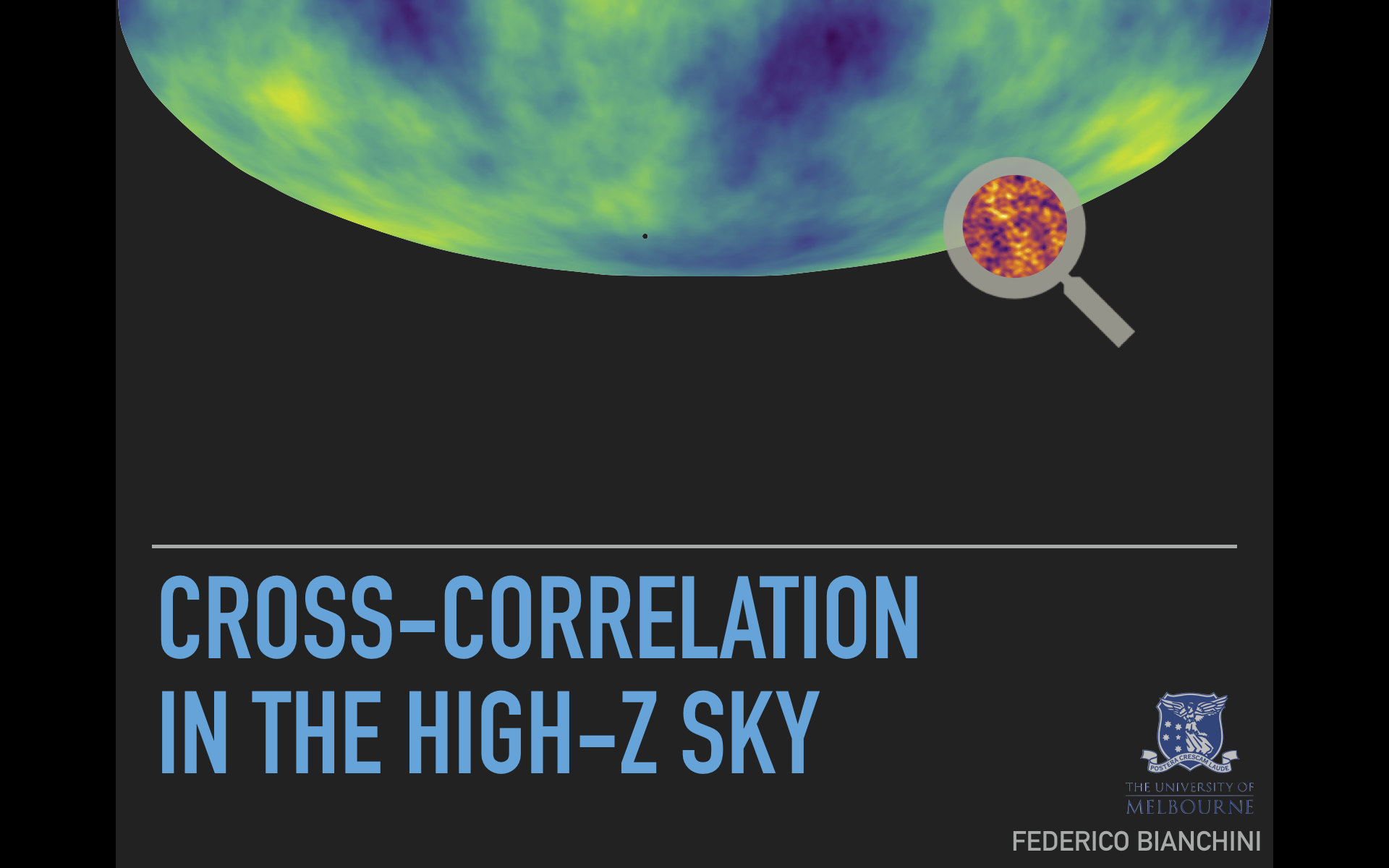Cross-correlation in the high-z sky: the Planck and Herschel case [slides]
David Caro building, Level 7 conference room
More information
-
 Dr Federico Bianchini, Postdoctoral fellow
Dr Federico Bianchini, Postdoctoral fellow
University of Melbourne
Email: federico.bianchini[at]unimelb.edu.au
Abstract
As well as providing us with a snapshot of the Universe at the time of recombination, the cosmic microwave backround (CMB) radiation carries a wealth of information about the later evolution of the Universe through the so-called CMB secondary anisotropies that originate from the interaction between CMB photons and the Large Scale Structure (LSS), such as the weak gravitation lensing of CMB.
In this talk I will present the first cross-correlation analysis between the CMB lensing maps reconstructed by the Planck/POLARBEAR teams and the spatial distribution of sub-mm galaxies from the Herschel H-ATLAS survey, the highest redshift sample exploited for cross-correlation analyses to date. By splitting the galaxy catalog in two redshift bins, we also attempt a tomographic analysis of the signal, highlighting the galaxy bias evolution over cosmic time. On the other hand, the amplitude of the cross-correlation is found to be higher than expected from the standard ΛCDM model. The robustness of the results is tested against possible systematic effects however none of them can fully account for the enhanced cross-correlation signal.
